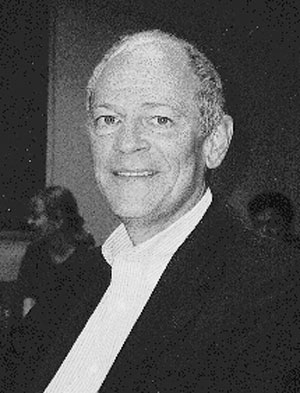Memorial Resolution: Joseph Oliger
Joseph Oliger (1941-2006)Joseph Oliger, Professor of Computer Science at Stanford University from 1974 to 2001, died on August 28, 2005 in Truckee, California, after a lengthy battle with cancer.
Oliger was well known for his early research in numerical methods for partial differential equations and is remembered with special fondness by many former students in the computer science and mathematics departments and the Scientific Computing and Computational Mathematics Program at Stanford, as well as by many colleagues around the world. He was a member of the SIAM Council (1982-87) and Board of Trustees (1993-95) and, from 1976 to 1984, an editor of SIAM Journal on Numerical Analysis.
Oliger was born in Indiana in 1941 and grew up on a farm. He received his BS and MS from the University of Colorado, Boulder. In the late sixties, he was working as a mathematician at National Center for Atmospheric Research (NCAR) in Boulder, and was probably not aiming at an academic career at that time. Then Heinz-Otto Kreiss met him there in 1970. He soon discovered Oliger's talent, and they started working together. At that time there was quite an intensive discussion about whether or not one should use higher order methods for large scale problems like weather predictions, and they set out to settle this question. They used Fourier analysis for finite difference approximations of simple hyperbolic model problem describing wave propagation, and estimated the necessary number of points per wavelength to achieve a certain accuracy. The result was quite clear. Except for very low accuracy requirements and short integration times, it certainly pays off to use fourth (and sometimes even higher) order methods in space compared to second order ones. The important point was that the analysis provided simple tools to make the best choice of order given a desired accuracy (OK?). Because of Oliger's affiliation with NCAR, the paper was published in Tellus (1972), and is one of the most quoted papers in numerical PDEs.
At the same time, the development of Fourier methods began. Indeed, NCAR played a central role even here, since Steve Orszag, who had shown interest in these methods, was visiting there for a year. Kreiss and Oliger included Fourier methods in their analysis, and found that for periodic problems on regular grids, they were very effective. But they also showed that for variable coefficients it is necessary to either write the equation in self-adjoint form, or else include dissipative terms.
In 1973, Oliger received his PhD from Uppsala University, Sweden, after having spent a year with the department of meteorology in Stockholm. The same year saw the appearance of the famous GARP report "Methods for the Approximate Solution of Time Dependent Problems" by Kreiss and Oliger. It was a thin soft cover report, but it contained most of the latest theory for difference and Fourier methods, and was quoted a lot in the years that followed. Indeed, it sold out very quickly, and is not easy to find today.
Oliger's academic career at Stanford was particularly remarkable for advising so many PhD students, twenty in all, who went on to very successful careers of their own. Since many of these have gone on to have PhD students of their own, Oliger has well over 100 academic descendants; see the Oliger tree at http://www-db.stanford.edu/pub/voy/museum/oligertree.html But even more impressive than the quantity and quality of Oliger's students is the uniform way in which they remember him: a caring, kind person who was never too busy to help them as much as he could, never mind how long the line of other students was outside his door.
In the 1990s, with a leave (half time) from Stanford, Oliger served as a director of RIACS. Research members there remembers him as someone who was very supportive and with whom they could work easily. Because of his stature in the computational PDE community, he had the confidence of NASA Ames management, which was very important to RIACS.
Oliger retired from Stanford in 2001, when he moved to Truckee, in his beloved Sierra Nevada, where he could focus his energies on the outdoor life that he loved so much. He was incredibly strong, both physically and mentally. In his early years he was a sprinter at the top level nationally. He was also a rock climber, an activity for which his mental strength was extremely useful. He was well known in the climbing community for pioneering ascents, with his friend Steve Roper, in Yosemite in 1961. Later in life, he became a long-distance runner. He loved to cross country ski in the mountains; if darkness fell when he was far away from home, he would dig a hole in the snow and, sleeping soundly, spend the night.
Oliger was very tolerant, a man of great integrity, always ready to help others and never known to describe another person in negative terms.
Joe Oliger is warmly remembered by all who knew him. He was a remarkable man.
Committee: Margot G. Gerritsen Walter Murray Bertil Gustafsson


Share This Story